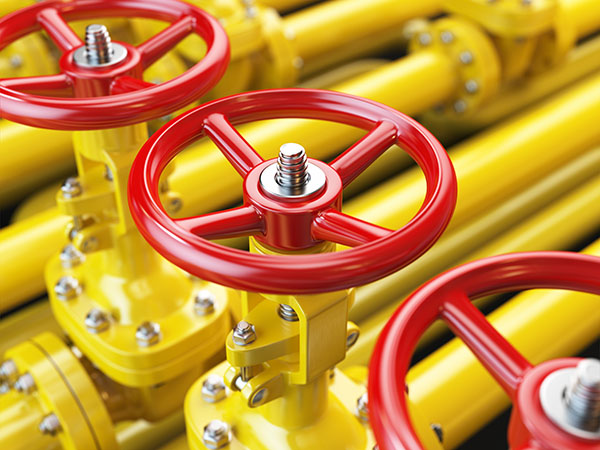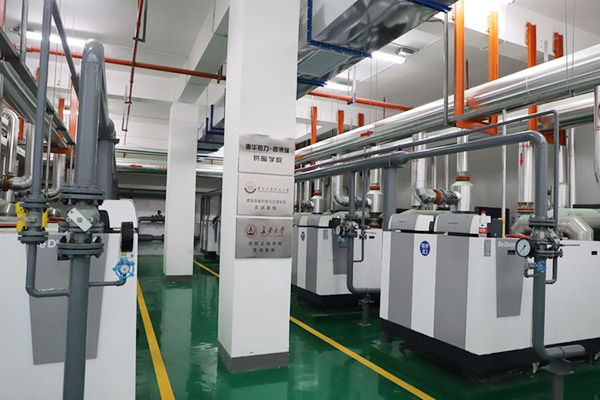
Location: 首页 > Applications > City heating

The urban heating system is composed of three parts: heat source, heat network and heat user. The urban heating system is a heating network that uses centralized heat sources to supply thermal energy users with heat energy for production or life through heating pipe networks and other facilities. The types of urban heating sources in the country include thermal power plants, centralized boiler rooms, decentralized boiler rooms, industrial waste heat, nuclear energy, geothermal, solar energy, heat pumps, household electric heaters, and small coal-fired (oil, gas) furnaces, etc.
The types of urban heat sources include thermal power plants, centralized boiler houses, decentralized boiler houses, industrial waste heat, nuclear power, geothermal, solar energy, heat pumps, household electric heaters, and small coal-fired (oil, gas) furnaces, etc. The heat sources widely used in central heating systems are mainly thermal power plants and centralized boiler rooms.
he urban heating system is composed of three parts: heat source, heat network and heat user. Energy conservation and environmental protection have become the consensus of mankind. We should carefully analyze and study energy-saving measures from the entire urban heating system to reduce energy waste in all aspects of production and use
Heat source is also called thermal production, which mainly refers to the boiler room or thermal power plant that produces and prepares heat medium with certain parameters (temperature, pressure). The heating network is an outdoor heating pipeline system that transports the heat medium, and is the link between the heat source and the heat user, and plays the role of transporting and distributing the heat source. Thermal users refer to indoor heating, ventilation and air conditioning, hot water supply and production process heat systems that directly use or consume thermal energy.

Urban heating systems can be classified in the following ways:
According to different heat media, it is divided into hot water heating system and steam heating system.
According to different heat sources, they are divided into cogeneration systems, boiler heating systems, and heating systems that use ground source heat pumps, water source heat pumps, industrial waste heat, nuclear energy, and solar energy as heat sources. The energy used for heating includes coal, oil, natural gas, electricity, nuclear energy, geothermal, solar energy, etc., while the energy used for central heating is still mainly coal.
According to the different heating pipes, it can be divided into single-pipe, double-pipe and multi-pipe heating systems.
Energy-saving measures
(1)Use climate compensator and matching electric valve and outdoor temperature sensor in heating station. The climate compensator can adjust the electric valve according to the change of outdoor temperature to meet the requirements of adjusting the temperature of the water supply. It can control a single loop or two loops. The electric valve can be a two-way valve, a three-way valve, or an electric water mixing valve. The electric valve receives the electric signal to adjust the mixing ratio of the supply and return water, so that the return water is used as much as possible, so as to achieve the purpose of energy saving
(2)Install a Kitzm differential pressure controller or a flow controller in the heating system. Differential pressure controllers are installed on each branch of the external network, that is, the entrance of each heating station and each riser of the indoor system, to maintain a constant pressure difference to solve the problem of hydraulic imbalance in the system, and to make the heating system operate at the required flow rate. Overload again. The flow controller can automatically adjust according to the actual flow within the set range.
(3) Adopt a new flow control method, namely the frequency converter, to adjust the speed of the water pump to meet the actual demand. Traditionally, the water flow is adjusted by a three-way valve. This method often wastes up to 30% of the energy from the bypass pipe. If the valve is used to adjust the flow rate from 100% to 70%, the energy consumption can only be saved by about 5%. Although the energy consumption is reduced, it leads to the opposite effect of increasing the unit power cost.
(4) For newly-built heating systems, double-pipe systems should be used as much as possible. Because for the double-pipe system by using the indoor constant temperature controller, the water intake of each thermal user can be controlled, and the heat emitted by solar energy, home appliances and the human body can be fully utilized, saving about 20% to 25%. At the same time, the vertical imbalance problem of the dual-tube system itself is solved.
(5) The existing single-pipe system can be retrofitted by installing an indoor constant temperature controller and a spanning pipe (see Figure 1). The size of the spanning pipe is one size smaller than the size of the main pipe. Operation shows that the reformed single pipe system can also achieve an energy-saving effect of 10% to 15%.

 Jing12011202000600 Website construction: Fengsheng Technology
Jing12011202000600 Website construction: Fengsheng Technology
